

Durham, a county steeped in history and natural beauty in the northeast of England, is renowned for its magnificent castles that dot the landscape. These castles, each with a unique story, stand as testament to the region’s turbulent past, marked by battles, royal feuds, and the ever-shifting sands of power. Durham’s castles are not just stone and mortar; they are the keepers of history, offering a window into the lives of those who lived, fought, and ruled within their walls. This blog aims to explore these majestic structures, delving into their histories, architectural marvels, and the roles they play in the present day.
The history of Durham Castles
The history of Durham is inextricably linked with the Norman conquest of England in the 11th century. Following William the Conqueror’s victory in 1066, the Normans embarked on a campaign to consolidate their control over the newly acquired lands, leading to the construction of castles across the country. Durham, with its strategic position and tumultuous borders, became a focal point for such fortifications.
The castles of Durham were initially built as wooden motte-and-bailey structures, designed for quick construction and effective defense against rebellions and Scottish raids. Over time, these were replaced or augmented by stone fortifications, reflecting advancements in military architecture and the need for more permanent symbols of Norman authority.
The significance of Durham’s castles extended beyond their military utility. They served as administrative centers, judicial courts, and residences for the region’s powerful bishops and nobles. This dual role underscored the castles’ importance in asserting royal and ecclesiastical power, controlling trade routes, and managing agricultural lands.
The medieval period saw Durham’s landscape marked by conflict and power struggles, with the castles often changing hands between rival factions. These conflicts, coupled with the castles’ strategic locations, ensured their ongoing fortification and expansion, leaving a legacy that would shape the region’s history for centuries to come.
Next, we’ll delve into the Famous Castles in Durham starting with Durham Castle, Raby Castle, and Barnard Castle, exploring each castle’s unique history, architecture, and significance.
Durham Castle: A Legacy of Power and Education
Barnard Castle
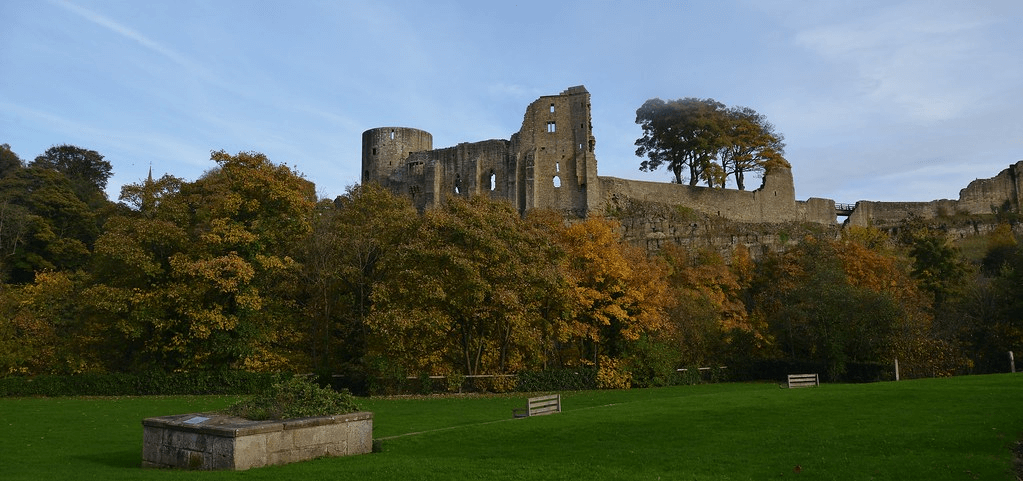
Brief History: Nestled on the bank of the River Tees, Barnard Castle’s history dates back to the 12th century when it was founded by Bernard de Balliol. It later passed into the hands of the Beauchamp family and then to Richard III. The castle played a pivotal role in regional defense and control.
Architectural Highlights: The castle ruins showcase the Norman architectural style, with the remains of a cylindrical tower, the great hall, and a chapel. The castle’s position on a high rock above the river also highlights strategic defensive design.
Visitor Information: Today, Barnard Castle is managed by English Heritage and is open to the public. Visitors can explore the ruins, enjoy the scenic views of the Tees Gorge, and participate in events and reenactments held at the site.
Raby Castle

Brief History: Raby Castle, one of England’s most impressive medieval castles, stands proudly in the Durham countryside. Its foundations were laid by the Nevills in the late 14th century, making it a significant historical monument. The castle has witnessed various historical events, including the Rising of the North and has remained in the hands of the Vane family since the 17th century.
Architectural Highlights: Raby Castle is renowned for its magnificent medieval architecture, including its massive towers and fortifications that have stood the test of time. The castle’s interior is equally impressive, featuring opulent state rooms adorned with artworks, tapestries, and period furnishings. The Barons’ Hall, with its high vaulted ceilings and medieval grandeur, is a particular highlight.
Visitor Information: Raby Castle welcomes visitors to explore its grand halls, extensive gardens, and deer park. The castle offers guided tours that delve into its rich history and architectural beauty. Special events, including historical reenactments and seasonal markets, are hosted throughout the year. The castle’s grounds provide a perfect setting for walks and picnics, making it a popular destination for families and history enthusiasts alike.
Photo Author David Dixon
Lumley Castle
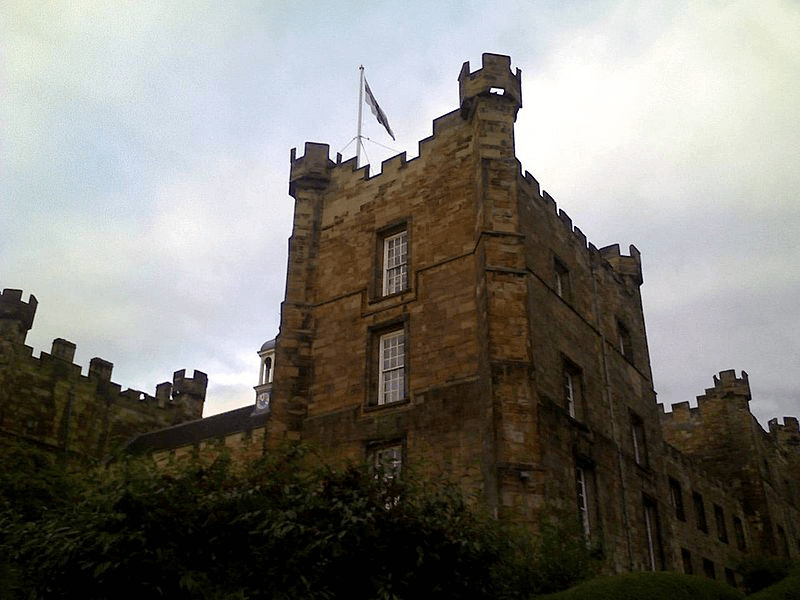
Brief History: Lumley Castle’s story begins in the late 14th century, originally built by Sir Ralph Lumley after converting his family’s manor house into a castle. Over the centuries, Lumley Castle has seen transformations and has been involved in England’s tumultuous history, including the Lumley Plot and its role as a bishop’s palace.
Architectural Highlights: This quadrangular castle showcases architectural elements from the medieval period, with its imposing structure, battlements, and towers. Notably, the castle’s banquet hall and chapel reflect its historical significance and luxury. Its conversion into a hotel has preserved its historical essence while offering modern comforts.
Visitor Information: As a hotel, Lumley Castle offers unique overnight stays, allowing guests to experience the castle’s historic ambiance. The castle is also a venue for weddings, events, and themed nights, such as murder mystery dinners. Guided tours are available, offering insights into the castle’s history and hauntings.
Durham Castle
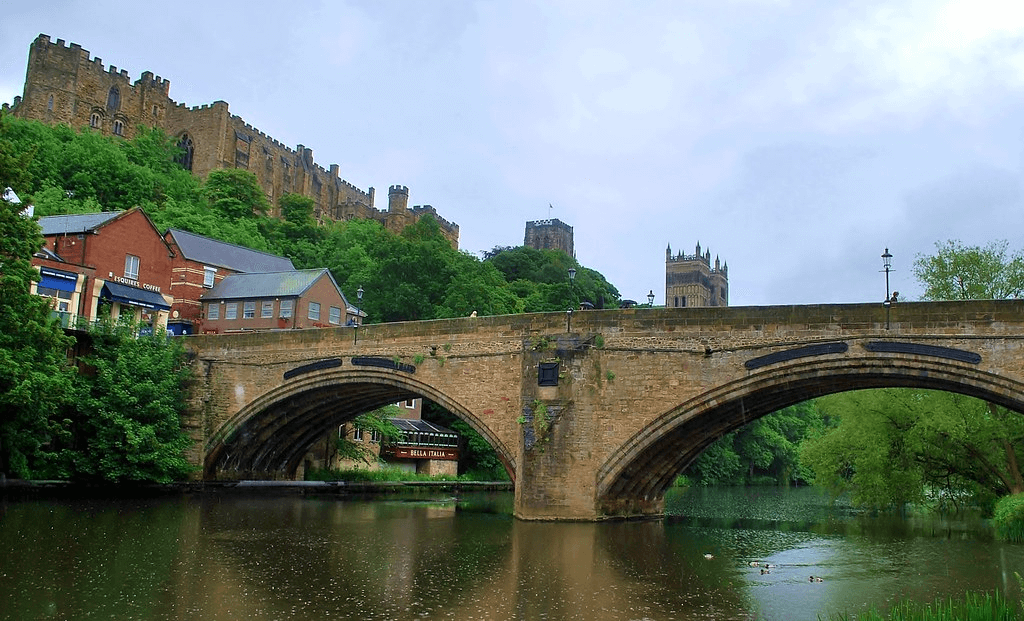
Brief History: Durham Castle, built in the 11th century as a symbol of Norman power in England, has served various roles through its history, including a fortress, palace, and eventually part of Durham University. It is a prime example of Norman architecture and has been a key player in the region’s history.
Architectural Highlights: Durham Castle is a UNESCO World Heritage Site, alongside Durham Cathedral, showcasing Norman architecture with Romanesque and Gothic elements. Its Great Hall, chapel, and living quarters are of particular interest, illustrating medieval and post-medieval architectural developments.
Visitor Information: Today, Durham Castle is part of University College, Durham University. Visitors can explore the castle through guided tours offered by the university, providing a unique opportunity to see a living monument that also serves as a vibrant academic community. Special events and exhibitions are also hosted here.
Walworth Castle
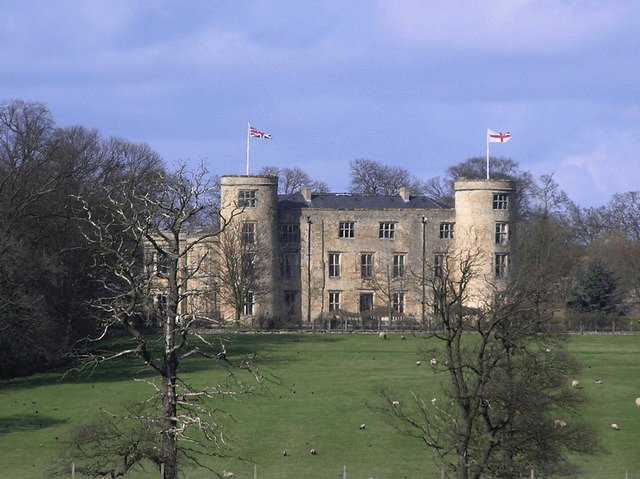
Brief History: Walworth Castle’s history begins in the 12th century, originally built as a medieval fortress. Over the centuries, it was transformed into a luxurious country house by the Jenison family in the 16th century, reflecting the changing architectural styles and societal norms.
Architectural Highlights: The castle features elements of Tudor and Elizabethan architecture, with its impressive façade and ornamental gardens. The interior of Walworth Castle boasts period features, grand fireplaces, and elegant rooms that have been carefully restored to maintain their historic charm.
Visitor Information: Currently serving as a hotel, Walworth Castle offers guests the chance to stay in a historic setting surrounded by beautiful countryside. It is also a popular venue for weddings, conferences, and events, with facilities for dining and leisure, including bird of prey experiences.
Photo Author Hugh Mortimer
Auckland Castle
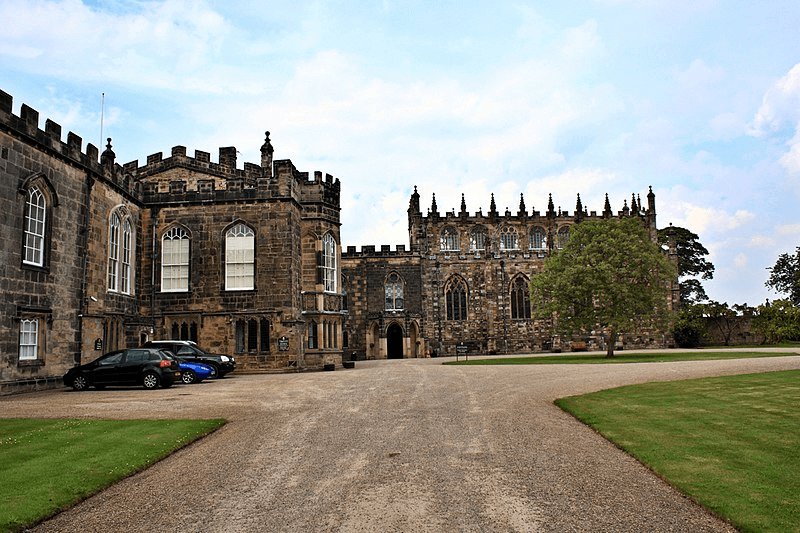
Brief History: Auckland Castle has been the residence of the Bishops of Durham for over 900 years, making it a site of significant historical and ecclesiastical importance. Its history reflects the power and influence of the prince-bishops in the region, with its role evolving through the centuries from a medieval fortress to an episcopal palace.
Architectural Highlights: The castle’s architecture is a testament to various eras, with Gothic and Baroque elements predominating. The Throne Room and the Chapel of St. Peter, with their remarkable artworks and stained glass, are highlights, showcasing the castle’s spiritual and historical significance.
Visitor Information: Auckland Castle is now a major cultural and tourist attraction, offering visitors insights into the history of the prince-bishops and the wider history of the North East of England. It hosts exhibitions, events, and activities, including access to its parks and gardens, making it a focal point for heritage and culture in Durham.
Photo Author Paul Buckingham
Brancepeth Castle
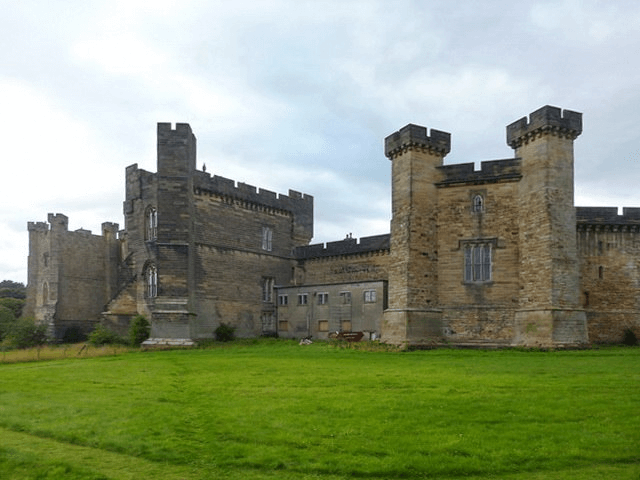
Brief History: Brancepeth Castle’s origins date back to the Norman era, with significant rebuilding in the medieval period. It has seen various phases of construction and reconstruction, reflecting the changing fortunes and tastes of its owners through the centuries, including the Nevilles and the Russell family.
Architectural Highlights: The castle boasts impressive defensive features, such as thick walls and a formidable gatehouse, alongside more refined elements like the chapel and the library, which display intricate woodwork and stonemasonry from later periods.
Visitor Information: Brancepeth Castle is occasionally open to the public for events such as craft fairs and historical reenactments, offering a glimpse into its rich history and architectural beauty. Private tours can also be arranged, providing a more in-depth exploration of the castle’s heritage.
Witton Castle
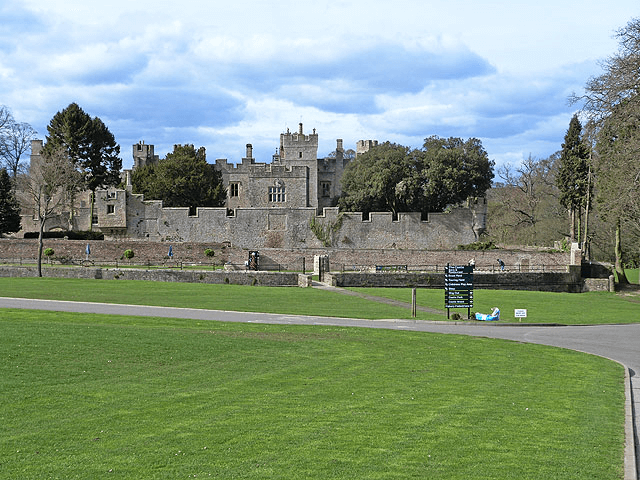
Brief History: Witton Castle’s story begins in the 15th century, though it underwent significant renovations in the 19th century, transforming it into a Victorian country house. Despite these changes, the castle retains a medieval feel, reflecting its long history and the legacy of its various owners.
Architectural Highlights: The castle features Victorian Gothic architecture, with earlier medieval structures integrated into the later construction. Its interiors include grand reception rooms and a notable library, while the surrounding estate offers picturesque landscapes.
Visitor Information: Witton Castle now serves as the centerpiece of a holiday park, offering various accommodations and leisure activities. While the castle itself is primarily a private residence, the grounds and certain facilities are accessible to visitors, offering a blend of historical exploration and modern leisure activities.
Lambton Castle
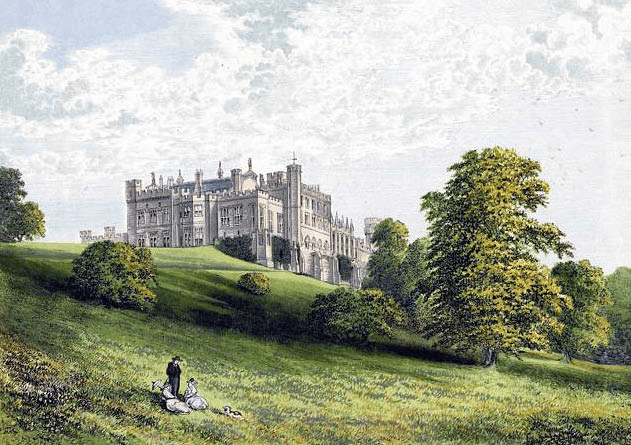
Brief History: Lambton Castle, built in the early 19th century on the site of a former Harraton Hall, is a relatively modern construction compared to other Durham castles. It was designed for the Lambton family, who played a significant role in the area’s coal mining history.
Architectural Highlights: The castle is a prime example of the Romantic Gothic revival style, with its dramatic battlements, turrets, and extensive parklands designed by celebrated landscaper John Webb. The interior boasts lavish decorations and intricate design, reflecting the wealth and tastes of the Lambton family.
Visitor Information: Lambton Castle is largely a private estate, with limited public access. It occasionally opens its doors for special events, such as charity runs and private tours, allowing visitors a rare glimpse into its grandeur and the surrounding estate’s beauty.
Bowes Castle

Brief History: Bowes Castle stands on the site of a former Roman fort, highlighting the strategic importance of its location through history. Built in the 12th century by the Normans, it served as a stronghold in the northern territories of England, reflecting the turbulent times of the medieval period.
Architectural Highlights: Although now in ruins, Bowes Castle’s remains give insight into Norman military architecture, with the keep’s substantial remains dominating the site. The structure’s layout and the remnants of its walls and chambers offer a fascinating glimpse into medieval castle construction and defense strategies.
Visitor Information: Managed by English Heritage, Bowes Castle is open to the public and provides an excellent opportunity for exploration and learning about the Norman period’s architecture and military history. Admission is free, making it an accessible site for history enthusiasts and casual visitors alike.
Architecture and Design of Durham’s Castles
The castles of Durham, embodying centuries of history, are marvels of medieval architecture and design. Their construction reflects a blend of necessity and nobility, serving both as formidable fortresses and as lavish residences. Understanding the architectural evolution of these castles provides insight into the technological advancements and aesthetic sensibilities of their times.
Architectural Styles: The castles of Durham showcase a range of architectural styles, from the Norman Romanesque of the early medieval period to the later Gothic influences. The Norman style is characterized by its massive quality, thick walls, and round arches, as seen in the earliest phases of Durham Castle. As time progressed, the Gothic style introduced pointed arches, ribbed vaults, and flying buttresses, which allowed for higher ceilings and larger windows, evident in the later modifications of these structures.
Defensive Features: The primary function of a castle was defense, and the castles in Durham were equipped with a variety of features to this end. High curtain walls, often complemented by a deep moat, encircled the structures, deterring attackers. Towers were strategically placed along the walls, providing vantage points for archers. Gatehouses were fortified entrances, often featuring drawbridges and portcullises. The keep, typically the strongest and most secure part of the castle, served as a last refuge during sieges.
Living Quarters: Beyond their defensive capabilities, these castles were also designed to accommodate the luxurious lifestyles of their noble inhabitants. Great halls were the heart of castle life, serving as venues for feasting and the administration of justice. These spaces were grandly designed, with high ceilings and elaborate decorations. Private chambers, or solar, offered retreat for the castle’s lord and family, evolving into more comfortable and ornate living spaces over time.
Innovations and Adaptations: Over the centuries, Durham’s castles saw significant architectural innovations and adaptations. The transition from wood to stone construction marked a significant leap in durability and defensive capability. The introduction of concentric castle design, where defensive walls were layered, offered even greater security. Internally, the development of more sophisticated living quarters reflected the increasing importance of comfort and status.
The castles of Durham stand as testament to the architectural genius of the medieval period. Their design was a balancing act between the practical need for defense and the desire for comfort and prestige. Today, these structures continue to fascinate and inspire, offering a tangible link to the past and a reminder of the enduring human desire to build and create.
